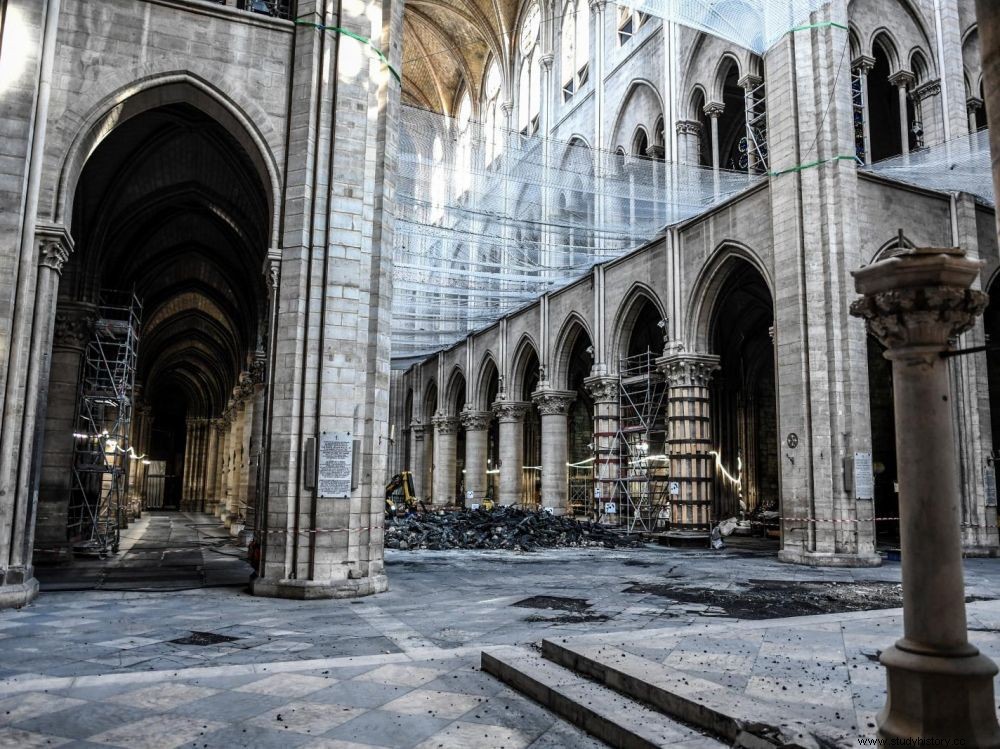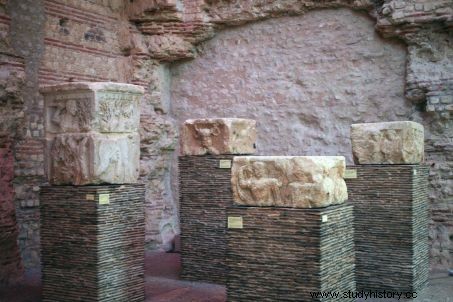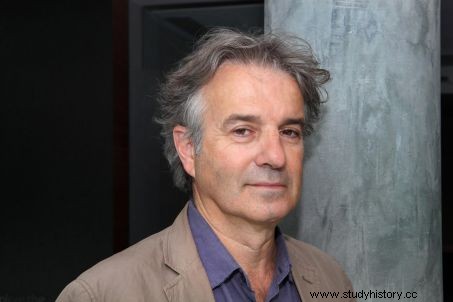SERIES. For many heritage researchers, the gigantic Notre-Dame de Paris construction site must be an opportunity to carry out excavations that are difficult, or even impossible in normal times, on a site whose history is ultimately very incomplete.

The interior of Notre-Dame Cathedral, where the charred beams still lie, on July 17, 2019.
In the aftermath of the fire that devastated the Parisian cathedral on the evening of April 15, 2019, the Association of Scientists in the Service of Notre-Dame de Paris, a collective of nearly 250 researchers made up of archaeologists, historians, of curators, chemists and even anthropologists was formed with the support of the CNRS. His goal:to put his knowledge at the service of the restoration of the monument. In this series of articles, Science and the Future gives the floor to several of its members in order to better understand the scientific challenges of reconstruction. Because despite the immense emotion, this drama paradoxically offers the rare opportunity to learn more about a building that still conceals many secrets.
"Whatever is dead as fact, is alive as teaching" , wrote Victor Hugo in 1831 in Notre-Dame de Paris . There is something poetic in making these words resonate today with the drama that occurred in the Parisian cathedral on the evening of April 15, 2019. Under the helpless eyes of the whole of France, the great lady of stone and lead consumed until losing its spire, 15% of its vaults and almost all of its roof, supported for almost eight centuries by the legendary "forest", a frame made of wood from trees felled for the most part around the year 1200.
Four months after the fire, most of the fallen elements – charred beams, pieces of stone, fragments of metal deformed by the heat – no longer litter the floor of the monument. They have been set aside to be scrupulously analyzed, with the aim, perhaps, of learning more about the history of the building. A story so long, so complex, that it still has many gray areas. And if the cathedral has already been excavated, "it is still full of unexplored places", assures us Didier Busson, former archaeologist of the city of Paris, specialist in the origins of the French capital from protohistory to the medieval period and member of the association Scientifiques Notre-Dame.
In the aftermath of the fire that devastated the Parisian cathedral on the evening of April 15, 2019, the Association of Scientists in the Service of Notre-Dame de Paris, a collective of nearly 250 researchers made up of archaeologists, historians, of curators, chemists and even anthropologists was formed with the support of the CNRS. His goal:to put his knowledge at the service of the restoration of the monument. In this series of articles, Science and the Future gives the floor to several of its members in order to better understand the scientific challenges of reconstruction. Because despite the immense emotion, this drama paradoxically offers the rare opportunity to learn more about a building that still conceals many secrets.
"Whatever is dead as fact, is alive as teaching" , wrote Victor Hugo in 1831 in Notre-Dame de Paris . There is something poetic in making these words resonate today with the drama that occurred in the Parisian cathedral on the evening of April 15, 2019. Under the helpless eyes of the whole of France, the great lady of stone and lead consumed until losing its spire, 15% of its vaults and almost all of its roof, supported for almost eight centuries by the legendary "forest", a frame made of wood from trees felled for the most part around the year 1200.
Four months after the fire, most of the fallen elements – charred beams, pieces of stone, fragments of metal deformed by the heat – no longer litter the floor of the monument. They have been set aside to be scrupulously analyzed, with the aim, perhaps, of learning more about the history of the building. A story so long, so complex, that it still has many gray areas. And if the cathedral has already been excavated, "it is still full of unexplored places", assures us Didier Busson, former archaeologist of the city of Paris, specialist in the origins of the French capital from protohistory to the medieval period and member of the association Scientifiques Notre-Dame.
Consistently successful excavations
The question of the origins of Notre-Dame, Didier Busson has made it his specialty, he whose career as a researcher began in the Crypt. He was brought back under the cathedral on many occasions, and in particular in 1982, during the installation of district heating, a vast project which he had to ensure the smooth running. "It was on this occasion that we discovered in the foundation of the pillars of the Gothic nave of the reuses which came from the Romanesque cathedral. Some had been removed, others left in place" , explains the archaeologist. "We also discovered burials, possibly those of medieval bishops. We don't really know."
In reality, the basement of Notre-Dame has always yielded treasures – at least for their historical value. First in 1625, during the creation of the Fountain on the parvis of Notre-Dame, intended to supply running water to the inhabitants of the Île de la Cité. The date of construction of this public "watering trough" corresponds to the very first mention of excavations in the history of the cathedral. "During the work, the workers found marble columns, probably ancient, part of which had been used for the bathroom of Marie de Medici in the Louvre." The fountain, considered too cumbersome, will be destroyed in 1748.

On the left, the Pillar of the Nautes at the Cluny Museum in Paris (Photo12/Gilles Targat).
The following discoveries will occur in the 18th century:in 1711, during the digging of the first vault for the archbishops, the workers of the time came across the famous Pilier des Nautes, a Gallo-Roman column erected in honor of Jupiter by shipowners of Lutetia, in the 1st century AD, under the reign of Emperor Tiberius. In 1847, more than a century later, it was this time during major road works that Théodore Vacquer, considered the father of Parisian archaeology, spotted an enormous building under the square looks like a basilica. When it was still standing, it probably extended right under the cathedral itself. "It was thought for a long time that it was the Merovingian basilica of Saint-Etienne, but today, we rather agree on the fact that it is a question of the Carolingian church", let Didier Busson know.
Finally, in 1858, Viollet-le-Duc reported a series of finds in his diary of works:"February 15, 1858… We begin to discover the wall of the apse of the church which preceded the current cathedral (...) These walls are very thick. February 22, 1858… We continue the excavation and we find part of the foundation of the old Saint-Marcel church (…). March 23, 1858… (…) At 20 cm from the ground, we find three coffins. March 29, 1958… We begin the laying of the piles of the vault of the bishops. During this time, we finish the excavation. Channels. Walls in all directions."
"We will inevitably discover things"
"Systematically, as soon as we dug, we found" , underlines the expert. "If you decide to search, you will inevitably discover things." It must be said that under the current cathedral, transformed since the fire of April 15 into a construction site preserved from view, the buildings have piled up over time:it is assumed that there was a very first place of worship, "an early Christian church of which nothing is known"; next would come the Merovingian basilica, from which the shafts of marble columns found in the Louvre would undoubtedly come; then the Carolingian, potentially the one found by Vacquer. As for the Romanesque cathedral, it was demolished in favor of the Gothic monument that we know, but many of its elements were reused or still substitute, hidden.
For the archaeologist, this profusion of elements from the past still buried, "sometimes only a few tens of centimeters from the current coating", must force the public authorities to take great precautions during the restoration of Notre-Dame, which Emmanuel Macron wishes to see completed within five years. "Despite the desire to find our cathedral as quickly as possible, we will have to exercise caution. Almost systematically, in the work of the superstructure, we have to dig into the ground", worries Didier Busson. "An archaeologist must be there permanently and can intervene as soon as a hole is made, even if I have no doubt that the services of the State will take all necessary measures to make them right."

Didier Busson, former archaeologist of the city of Paris and specialist in the origins of the French capital (Manuel Cohen).
On April 19, 2019, just four days after the tragedy, the management of the National Center for Scientific Research (CNRS) precisely created the "scientific site of Notre-Dame". Seven working groups have thus been formed, some focused on stone, wood, metals or even glass. Throughout the duration of the project, they should come in support of the emergency research carried out by the teams of the Ministry of Culture and share their historical and scientific reflections. Philippe Dillmann (research director at the CNRS and material science engineer) and Martine Regert (scientific deputy director at the CNRS Ecology and Environment Institute), both appointed to coordinate the program, are also members of the Scientific Association of Notre-Dame.
Secrets still well kept
Despite the tight deadlines, Didier Busson begins to dream:"If reinforcement work at the level of the choir were to be undertaken, or if it was necessary to intervene more generally in the basement, it would be exciting to resume the excavations of 1711. Who knows, maybe we'll discover the continuation of the pillar of the Nautes!" The expert would also be delighted to see work undertaken on rue du Cloître Notre-Dame, where there were before their respective destructions in the 18th and 19th centuries two churches still full of mystery:Saint-Jean-le-Rond and the little Saint- Denis du Pas. "Some people date the second, which stood on the site of the current Square Jean XXIII, very far back in time, to the legendary founder of Parisian Christianity, Saint-Denis." Very little is known of these buildings. The archaeologist, however, remains realistic:"There is already so much to do. I doubt that we need to go that far" .
For the moment, the consolidation phase of the building, which still threatens to collapse, is not complete. The restoration work itself cannot begin before the first half of 2020, said Michel Cadot, the prefect of the region. Nothing has yet been decided as to the face that the future Notre-Dame will take. It is only once the diagnosis of the state of the building has been established that an international architectural competition will determine whether audacity will take precedence over tradition or not. Without being able to start thinking about the future, there is therefore no longer any reason not to dig into the past.
